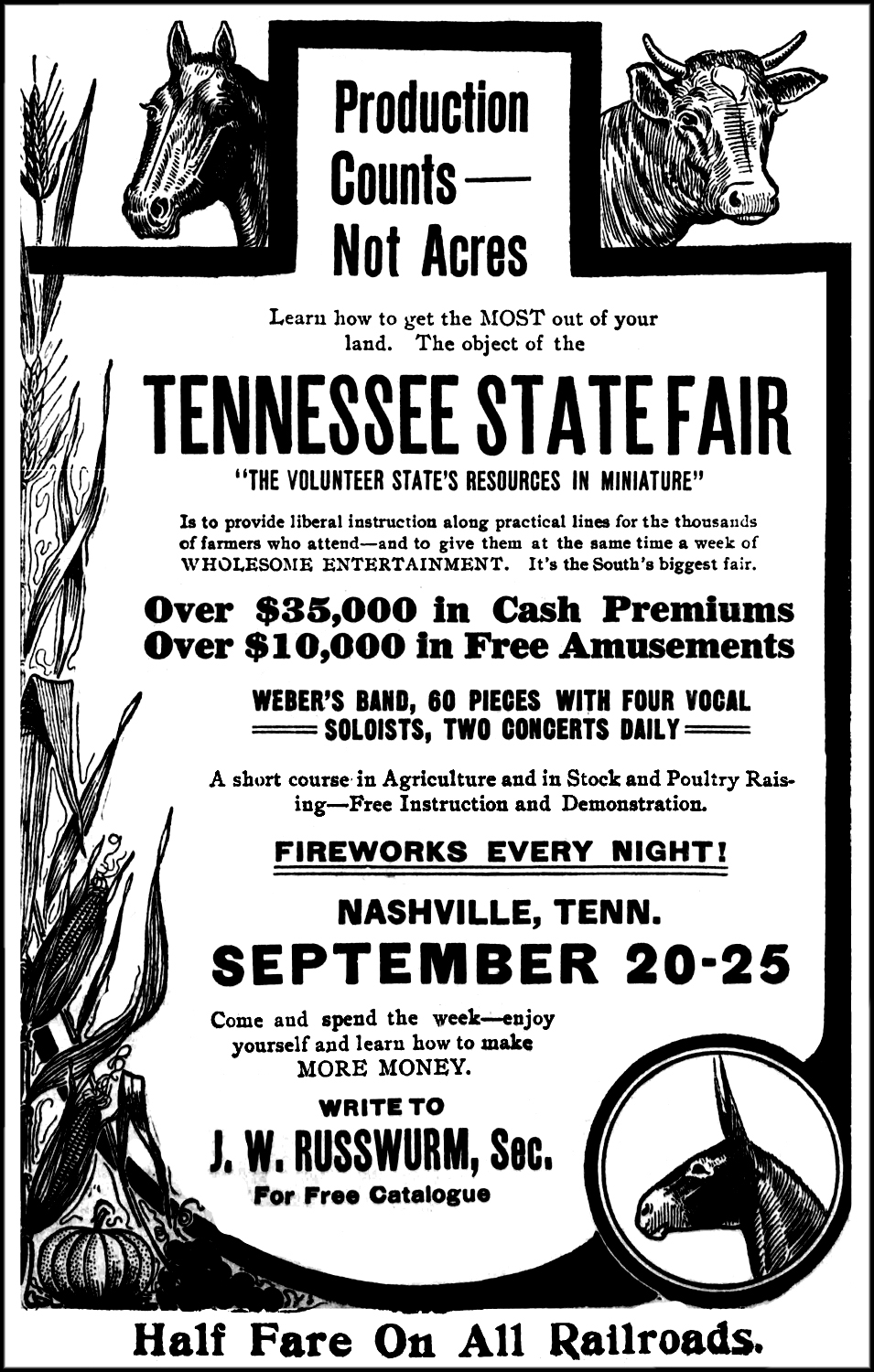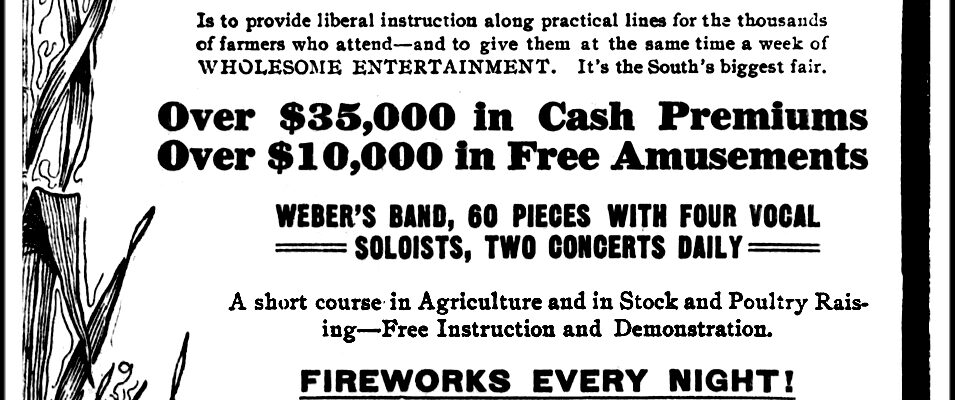During Sept. 20-25, 1909, an impressive exhibit pitted Tennessee against the world. When you put together an exhibition that displays Tennessee’s resources in miniature, you have a sight that is worth observing and an inspiration to return home and take better advantage of the natural opportunities afforded by the South. The purpose of Nashville's Tennessee State Fair was to make the people of the South realize that it's not so much the number of acres they possess but the production output from them that truly counts.
The state planned to take over the management of the fair beginning January 1, 1910. The association the prior year made preparations to ensure its final effort produced the very best State Fair that had ever been held south of the Mason and Dixon line (or for that matter, anybody else’s line).
The premium appropriation that year exceeded $35,000, promising that the rewards offered would be a great deal more money with trophies more elaborate than those previously offered by outside individuals and numerous organizations. The premium list for the great annual show of the American Berkshire Congress, for instance, amounted to several hundred dollars in addition to the handsome championship cups offered.

1909 Tennessee State Fair Advertisement #1
The Fair was held in connection with the regular show of the State Fair’s Swine Department, but it was so big that several additional judges were required. It was a matter to be proud of that the present world champion Berkshires were bred in Tennessee and were still residents of the Volunteer State.
Tennessee’s exposition, which had come into the front ranks of the big state fairs and in actual money value to the people of the South, had established a great record since its modest beginnings.
The fair had a membership in the American Association of Fairs and Expositions, which made a showing for championship honors. The exhibition was recognized by Northern breeders as “The Fair” for winning good will in the South and it was the only Southern fair visited by a great many of them, though most of the best strings were shown at Memphis, which immediately followed the Tennessee State Fair and preceded the Illinois State Fair.
No event of the kind ever held in the South had been so helpful and interesting to the farmer, the stockman, the fruit grower and the public in general as was the 1909 Tennessee State Fair.

1909 Tennessee State Fair Advertisement #2
While the educational features gave the fair its primary purpose in exhibiting, the management, realizing the importance of amusement attractions, appropriated over $10,000 for free features alone. These included the great Weber Band of Cincinnati, the same band that played for years with spectacular fireworks every night.
The Tennessee State Fair purposed to help teach the methods by which the agricultural worker could get the maximum output from every acre of land under cultivation. This applied not only to the products of the fields, but to the improvement of livestock and the teaching of modern methods of home-making by the Woman's Department.
In reality, the mission of the State Fair was to help the people of Tennessee and of the South to greater happiness and prosperity, which included more of the comforts of home.
As noted, the management of the event was spending heavily for free amusements. With this amount of money, the Amendment Committee was able to get the very best in entertainment available for any fair. What the South needed was the increase of the farmers' average income by $500.
It was generally agreed that this would be more quickly accomplished by the adoption of the principles taught at the state fairs than in any other way thus far devised. The fair was eagerly awaited by its public. Indeed, the 1909 Tennessee State Fair was a “Mighty Modern Exhibition.”
